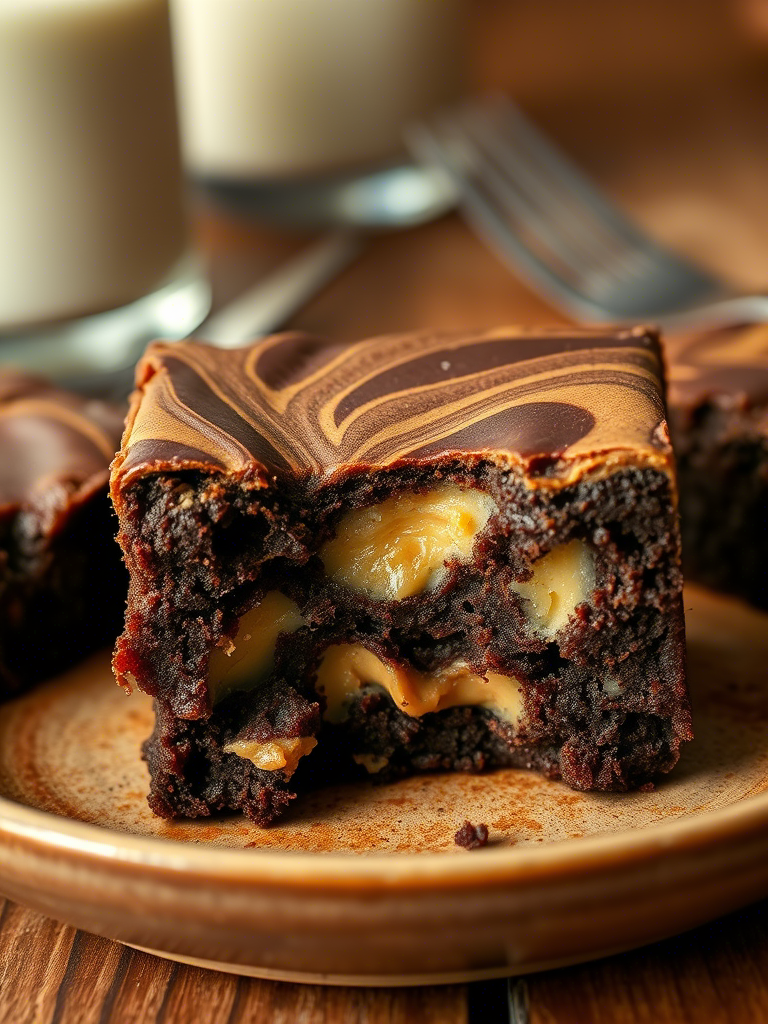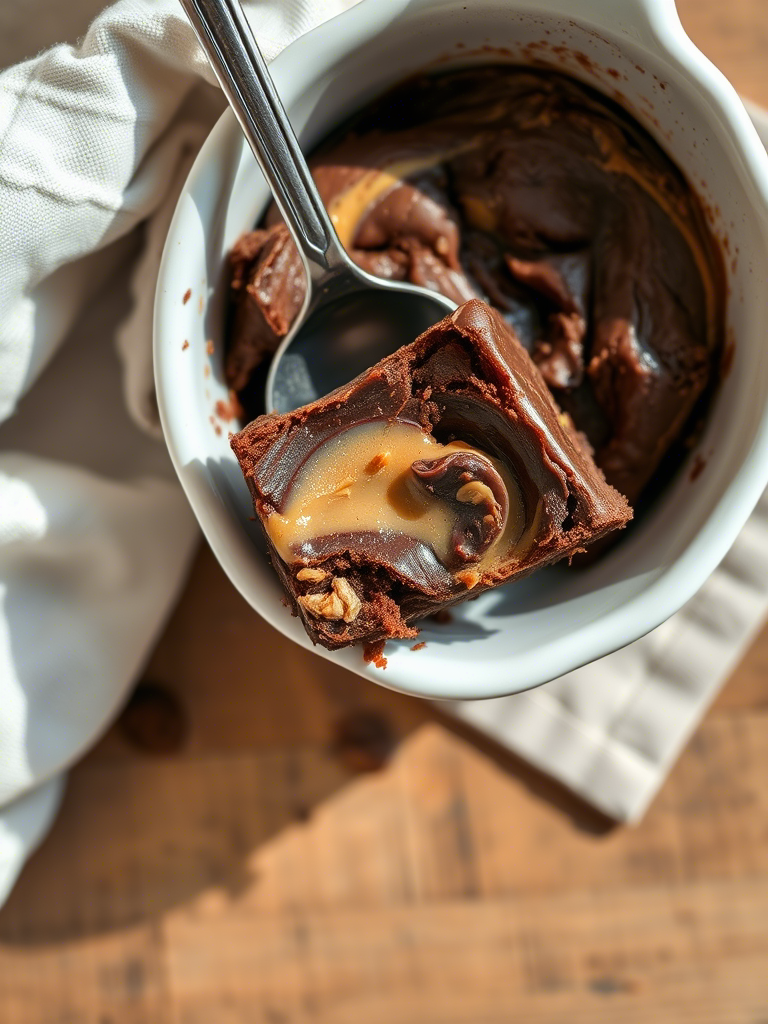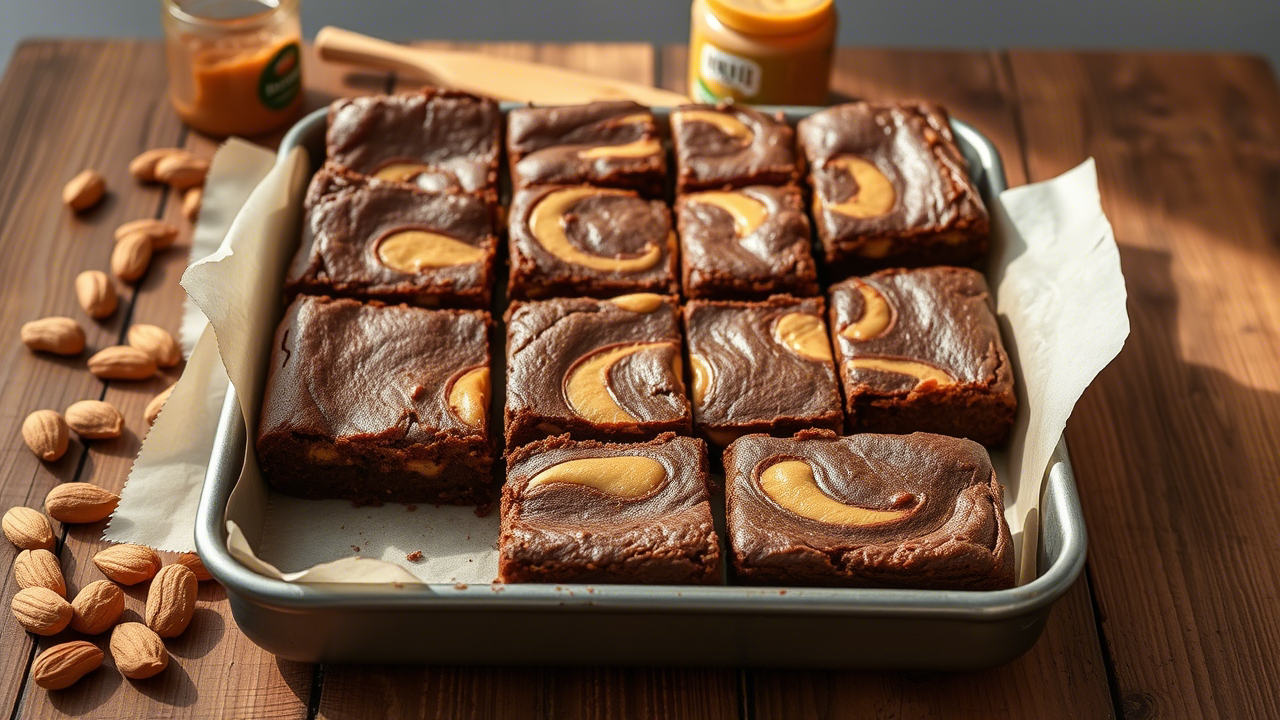Brownies are timeless. They’re the ultimate comfort food. But throw peanut butter into the mix, and you’re on a whole new level of indulgence. Fudgy peanut butter brownies—those dense, chewy, melt-in-your-mouth delights—have captured the hearts of many dessert lovers and pros alike. But making them perfectly fudgy, with the right balance of peanut butter richness and chocolate intensity, is a craft all its own.
In this article, I’ll dive deep into the nuances of crafting fudgy peanut butter brownies. We’ll dissect ingredients, techniques, and common pitfalls that even experienced bakers stumble upon. Whether you’re a pastry chef or a home cook looking to up your brownie game, this is your go-to resource. Expect no fluff, just expert-level insights with a bit of honest, human quirks sprinkled in.
The Science of Fudgy Brownies
Before we get elbow-deep in mixing bowls, let’s decode what makes a brownie fudgy versus cakey. The distinction is subtle but critical. Fudgy brownies are dense and moist with a glossy, crackly top. This texture comes down to fat and moisture balance.
Fat is your friend here, usually butter or oil. Higher fat content inhibits gluten formation, giving that signature chewiness. Water content must be carefully controlled to avoid cakey crumb. Also, eggs play a dual role—binding and contributing moisture. Too many eggs, and you get more cake-like texture.
Sugar influences not just sweetness but texture. Brown sugar with its molasses content adds moisture, making brownies more tender. White sugar creates more structure, leading to crisp edges. Using a mix is common in fudgy recipes.
Adding peanut butter complicates things. It’s dense, oily, and packed with protein, which impacts gluten formation and fat ratio. Unsweetened natural peanut butter is best to control sweetness and texture, but watch for oil separation—stir well!
Ingredients: Choosing Quality for Ultimate Flavor
Let’s talk chocolate. Chocolate isn’t just chocolate here. Use high-quality bittersweet or semi-sweet chocolate bars, not chips, for better melting and flavor depth. Cocoa powder can be added to boost chocolate intensity without extra fat.
Peanut butter choice is critical. Avoid overly processed or flavored varieties. Natural, creamy peanut butter gives that authentic nutty flavor and smooth mouthfeel. Some pros use a blend of peanut butter and peanut paste for texture contrast.
Butter quality matters. European-style butters, with higher fat content, give richer brownies. Also consider browned butter for a nutty complexity—just don’t burn it.
Flour should be all-purpose for a balanced gluten network. Some bakers incorporate a small amount of cake flour for tenderness, but tread lightly; too little gluten can make brownies too fragile.
Eggs should be fresh and at room temperature for even mixing and better aeration. Salt is essential—not just for flavor but to enhance the chocolate and peanut butter profiles.

Mixing Techniques: Why Order and Method Matter
The order in which you mix ingredients dramatically influences texture. Typically, melted butter and sugars are combined first to dissolve sugar and create a glossy batter. Eggs follow, added one at a time for better emulsification. Then dry ingredients go in, mixed gently to avoid overworking gluten.
When peanut butter enters, it must be smoothly incorporated to avoid streaks but not overmixed to prevent toughness. Some bakers fold peanut butter in at the end to keep swirls, others fully integrate it for uniform flavor.
Temperature of ingredients affects batter consistency. Warmer butter and eggs promote better emulsification; cold flour can cause lumps. Sifting dry ingredients ensures even distribution and aeration.
Baking Temperature and Time: The Fine Line Between Gooey and Dry
Oven temperature is often overlooked. Lower temps (around 325°F/160°C) bake brownies gently, promoting fudginess without drying. Higher temps crisp edges faster but risk drying interiors.
Baking time must be closely monitored. Insert a toothpick near center—if it comes out with moist crumbs, you’re golden. Too dry, and it’s overbaked; too wet, it’s underdone. Note that peanut butter alters moisture retention, often needing slight baking time adjustments.
Pro tip: bake in a glass pan to monitor doneness visually, or use an instant-read thermometer aiming for about 210°F internal temp for fudgy brownies.
Common Issues and How to Fix Them
Dry or cakey brownies?
Likely from overbaking or too much flour. Check measuring accuracy—spoon and level flour instead of scooping. Reduce baking time or temperature slightly.
Greasy or oily texture?
Too much butter or natural peanut butter oil separation. Stir peanut butter thoroughly before measuring. You can reduce added butter slightly if peanut butter is oily.
Flat or crumbly brownies?
Insufficient eggs or sugar can cause structure failure. Also, overmixing flour develops gluten, leading to toughness. Mix just until combined.
Peanut butter sinks to bottom?
Use thicker peanut butter, or create swirls instead of mixing fully. You can also chill batter before baking to slow settling.

Variations and Trends in Fudgy Peanut Butter Brownies
Experimentation is part of the fun. Some pastry pros fold in chopped roasted peanuts or peanut brittle for crunch contrast. Swirling in caramel or adding a layer of peanut butter frosting can amplify decadence.
Emerging trend? Using alternative nut butters like almond or cashew for a twist on classic. Or incorporating protein powders to cater to health-conscious consumers without sacrificing texture.
Gluten-free fudgy peanut butter brownies are gaining traction too, often relying on almond flour or oat flour blends. These require adjusted baking times and moisture balance but can be just as indulgent.
Real-World Examples and Case Studies
A bakery I consulted recently struggled with flat brownies that were oily. After reviewing their process, we discovered they used natural peanut butter but didn’t stir it well, causing oil separation and excessive fat. Adjusting peanut butter preparation and reducing butter by 10% solved the issue.
In another case, a chef aimed for intense fudginess but kept ending with cakey brownies. We optimized the egg-to-flour ratio, reduced baking temp by 15°F, and switched to a mix of brown and white sugar. Result? Perfectly dense, moist brownies with a balanced sweetness.
Statistics from a 2023 dessert trend report show a 25% increase in peanut butter-themed bakery items, driven by consumer demand for nostalgic, rich flavors. Brownies, being versatile, lead that category.
FAQs: Clearing Up Confusions
Can I use peanut butter chips instead of peanut butter?
Chips add flavor but won’t replicate the creamy, moist texture peanut butter provides. Use chips for mix-ins or topping, not a substitute for peanut butter in batter.
How do I store fudgy peanut butter brownies?
Keep airtight at room temp for up to 3 days. For longer storage, freeze wrapped tightly—defrost at room temp. Avoid refrigeration; it can dry brownies out.
Can I make these vegan?
Yes, by substituting eggs with flax or chia gel and using dairy-free butter. Expect slightly different texture; might need a touch more fat or moisture.
Wrapping Up: Key Takeaways for Perfect Fudgy Peanut Butter Brownies
Fudgy peanut butter brownies are a fine balance act between fat, moisture, and structure. Choosing quality ingredients and controlling mixing and baking parameters are crucial. Peanut butter’s unique properties require adjustments in traditional brownie recipes to get that perfect texture.
Don’t be afraid to experiment with sugar ratios, peanut butter types, and baking times. Observe closely and trust your senses, not just the timer. Remember, a fudgy brownie is more about feel and look than a toothpick test alone.
For pros, incorporating small tweaks like browned butter, alternative flours, or flavor add-ins can elevate your product and keep your offerings fresh in a competitive market.
In the end, the reward is a brownie that’s dense, chewy, deeply chocolatey, with luscious peanut butter undertones that leave customers begging for more. Now, go make some magic happen in your kitchen.
FAQs
Can I use peanut butter chips instead of peanut butter?
Peanut butter chips add flavor but don’t provide the creamy texture that actual peanut butter gives.
How should I store fudgy peanut butter brownies?
Store airtight at room temperature for up to 3 days or freeze tightly wrapped for longer storage.
Can fudgy peanut butter brownies be made vegan?
Yes, by substituting eggs with flax or chia gel and using dairy-free butter alternatives.
Why are my brownies dry or cakey?
Usually from overbaking or too much flour—measure carefully and reduce baking time or temperature.
How do I prevent peanut butter from sinking in the batter?
Use thicker peanut butter or swirl it in instead of fully mixing, and chill the batter before baking.
What’s the best chocolate to use for fudgy peanut butter brownies?
High-quality bittersweet or semi-sweet chocolate bars melt better and offer richer flavor than chips.
Can I use alternative nut butters instead of peanut butter?
Yes, almond or cashew butter can be used but will slightly change the flavor and texture.
What baking temperature ensures fudgy brownies?
Lower temperatures around 325°F (160°C) bake brownies gently to keep them fudgy and moist.
How do sugar types affect brownie texture?
Brown sugar adds moisture and tenderness, white sugar creates structure and crisp edges.
Why are my brownies greasy or oily?
Likely too much butter or oil separation from natural peanut butter; stir peanut butter well before measuring.

Mariana is a passionate home cook who creates delicious, easy-to-follow recipes for busy people. From energizing breakfasts to satisfying dinners and indulgent desserts, her dishes are designed to fuel both your body and hustle.
When she’s not in the kitchen, she’s exploring new flavors and dreaming up her next recipe to share with the Foodie Hustle community.

